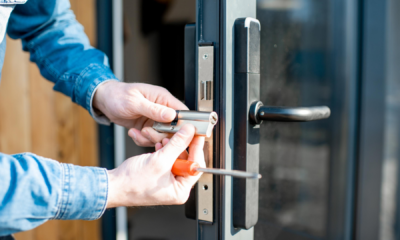5 Ways to Prevent Business Lockouts
So, you've experienced that sinking feeling of being locked out of your business, right? It’s not just frustrating—it can disrupt your day, impact productivity, and even lead to financial losses. The good news is, with some proactive measures, you can avoid these headaches altogether. Whether it's implementing advanced key management systems or relying on trusted locksmith services like Brothers Locksmith, there are effective strategies to keep your business secure and operational. Let’s dive into five essential tips to prevent business lockouts and ensure your business runs smoothly without any unexpected interruptions.
Read more about How to pick an office door lock!
Implement a Key Management System
A key management system is a structured approach to managing keys and ensuring they are always accounted for. By keeping an organized record of who has which key and when, you can significantly reduce the chances of misplacing or losing keys. This system often includes labeled key storage, sign-out sheets, and digital tracking options to monitor key usage in real-time. Not only does this enhance security, but it also streamlines access control within your business. Implementing a key management system is a smart, proactive step towards preventing lockouts and maintaining smooth operations.
Use Digital Locks and Smart Access Systems
Digital locks and smart access systems are game-changers in preventing business lockouts. These advanced systems eliminate the need for traditional keys, instead using keypads, fingerprint scanners, or mobile apps for entry. With digital locks, you can easily manage access remotely, revoke permissions instantly, and even receive notifications when someone enters your premises. Smart access systems provide a higher level of security and convenience, ensuring that only authorized personnel can gain entry. By integrating these modern solutions, you enhance your security infrastructure and significantly reduce the risk of lockouts.

Maintain Duplicate Keys and Access Cards
Maintaining duplicates of all keys and access cards is a simple yet effective way to prevent lockouts. Ensure that duplicates are stored in secure but accessible locations, such as a locked drawer in the office or with a trusted employee. Having these backups readily available can save the day in case of an emergency. Additionally, establish a clear protocol for who can access these duplicates and under what circumstances. This ensures that in the event of a misplaced key or card, your business operations can continue without a hitch.
Regularly Update Security Protocols
Regularly updating your security protocols is crucial for staying ahead of potential lockout situations. This involves periodically reviewing and enhancing your access control measures to ensure they are up to date with the latest security practices. Train employees on the importance of these protocols and conduct regular drills to ensure everyone knows what to do in case of a lockout. Monitoring access logs and performing routine checks can help identify any lapses in security, allowing you to address them promptly. By keeping your security measures current, you minimize the risk of lockouts and ensure your business remains secure.
Hire a Commercial Locksmith
Having a professional locksmith like Brothers Locksmith on call is a wise investment for preventing business lockouts. A reliable locksmith can provide a range of services, including creating high-quality duplicate keys, installing advanced locking systems, and offering emergency lockout assistance. Establishing a relationship with a professional ensures that you have expert help available whenever you need it. This proactive approach not only helps in preventing lockouts but also ensures that your business security is handled by experienced professionals. Choose a reputable locksmith who understands your business needs and can provide tailored solutions to keep your premises secure.
Conclusion
By implementing these five strategies—using a key management system, digital locks, maintaining duplicates, updating security protocols, and hiring a professional locksmith—you can effectively prevent business lockouts and ensure your operations run smoothly. Taking these proactive measures protects your business from the disruptions and costs associated with being locked out. Start today by evaluating your current security measures and making the necessary improvements to safeguard your business. And remember, Brothers Locksmith is always here to assist with expert advice and professional services to keep your business secure.
Call Us Any Time!








